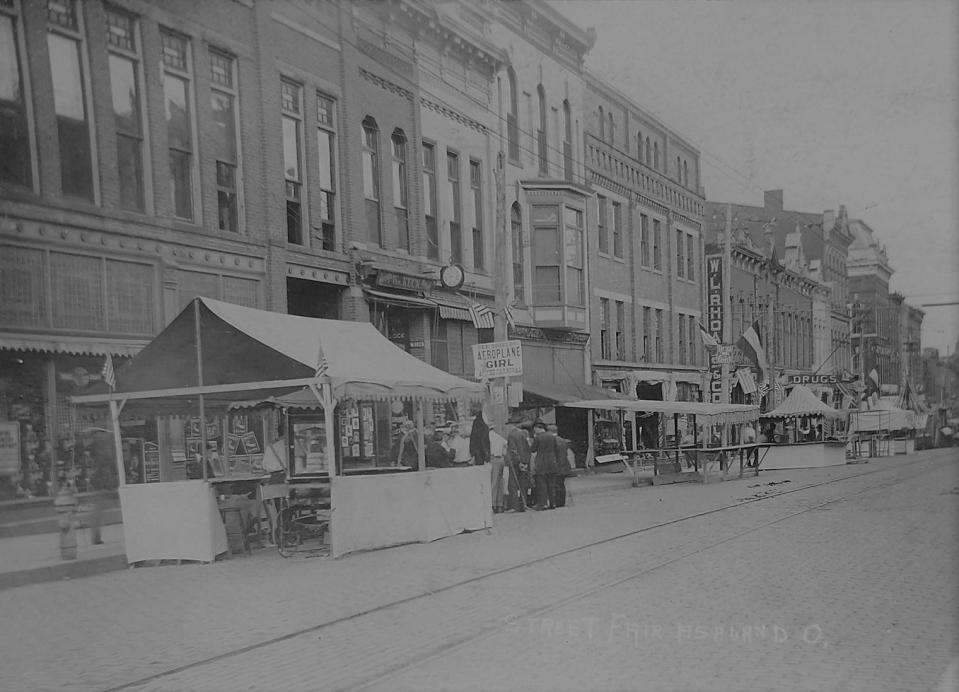Ashland Memories: The McNulty and the Miller houses
For nearly half a century, two grand competitors − the McNulty House and the Miller House − faced each other stoically across Main Street, advertising their hospitality to travelers and anyone seeking room and board.
James McNulty married Margaret Ann Pugh on Jan. 5, 1841. Soon afterward, they started running the McNulty Tavern on the old site of the Findley Tavern north of Center Street. In 1851, James went to California, where he was unlucky enough to get cholera and die, leaving his widow responsible for their four children and a tavern.
James McNulty’s brother, William, lost his wife around the same time, and he and Margaret decided to marry in November 1855, thus keeping the McNulty Tavern in the family.

In 1850, Dr. Sampsel had built a large building on the south side of Main, which is now occupied by the Uniontown Brewing Co. As far as I am aware, this is downtown’s oldest remaining building.
Through much of the 1850s the Sampsel House was leased and managed by A.W. Melsheimer as a hotel.
In 1859, a momentous real estate transaction occurred. James and Margaret McNulty purchased the Sampsel House in exchange for the old McNulty tavern, valued at $3500, plus ten thousand dollars.
About the Miller House
In 1853, Michael Miller had built a building across the way from the Sampsel House, on the site that is now occupied by the Ashland Bike Company.
Michael Miller was born in Alsace France in 1818 and came to the United States in 1840. Upon his arrival in Ashland in 1846, he started a bakery and confectionary business. He then started keeping a hotel, which expanded with the construction of the aforementioned building in 1853.
An 1856 advertisement noted that he catered to the traveling public, with good stabling for horses and a “faithful Ostler” to care for them. He also advertised boarding for families or single persons “at reasonable rates.”

In connection with his hotel, Miller kept his bakery and a restaurant, and he advertised “Temperance drinks” at his eating house.
In addition to travelers, the Miller House was also home to regular boarders, including in 1870 Jacob Cahn who, at thirty-one years of age, was described in that year’s census as a “retired clothing merchant.”
Changes in the 1890s
Both the Miller House and the McNulty house underwent changes in the 1890s. William and Margaret McNulty ran the McNulty House until 1890, when George Hemingway took it over. William died that year, and Margaret died in 1894.
Michael Miller died in 1891, and his wife Susan died 15 years later.
In 1895, R.W. Sterling leased the McNulty House building and as proprietor, he brought in all new furniture. He advertised “new bedding and clean furniture throughout.”
Around the same time, Hemingway also acquired the Miller House, which he ran as the “New Miller House.”
George Hemingway later converted the McNulty House into a boardinghouse called The Hemingway, which he ran until 1913. For many years after that, the building was home to the Gilbert Furniture company.
The Miller House closed its doors in 1902 and was remodeled into business rooms. In the process, youthful shenanigans caused consternation amongst a crowd of people gathered in the street near the building on the Fourth of July. A young “urchin” ran past and tossed a dynamite firecracker into a trough of wet mortar. The explosion flung mortar that reportedly hit over a hundred people and damaged many dresses.
The new business block was known for a while as the Semple-Grabill building, until it was torn down to make way for a new J.J. Newberry Store in 1939.
This article originally appeared on Ashland Times Gazette: Ashland Memories: The McNulty and the Miller houses

